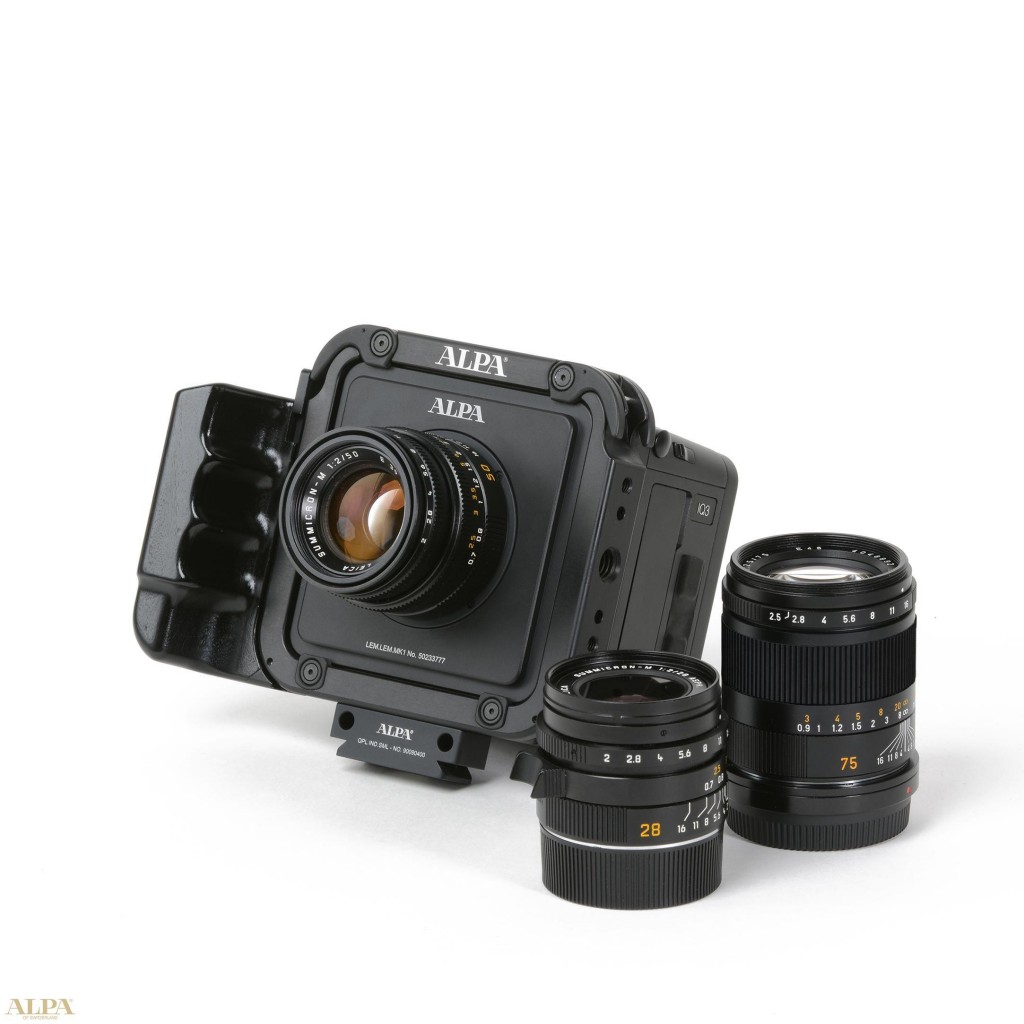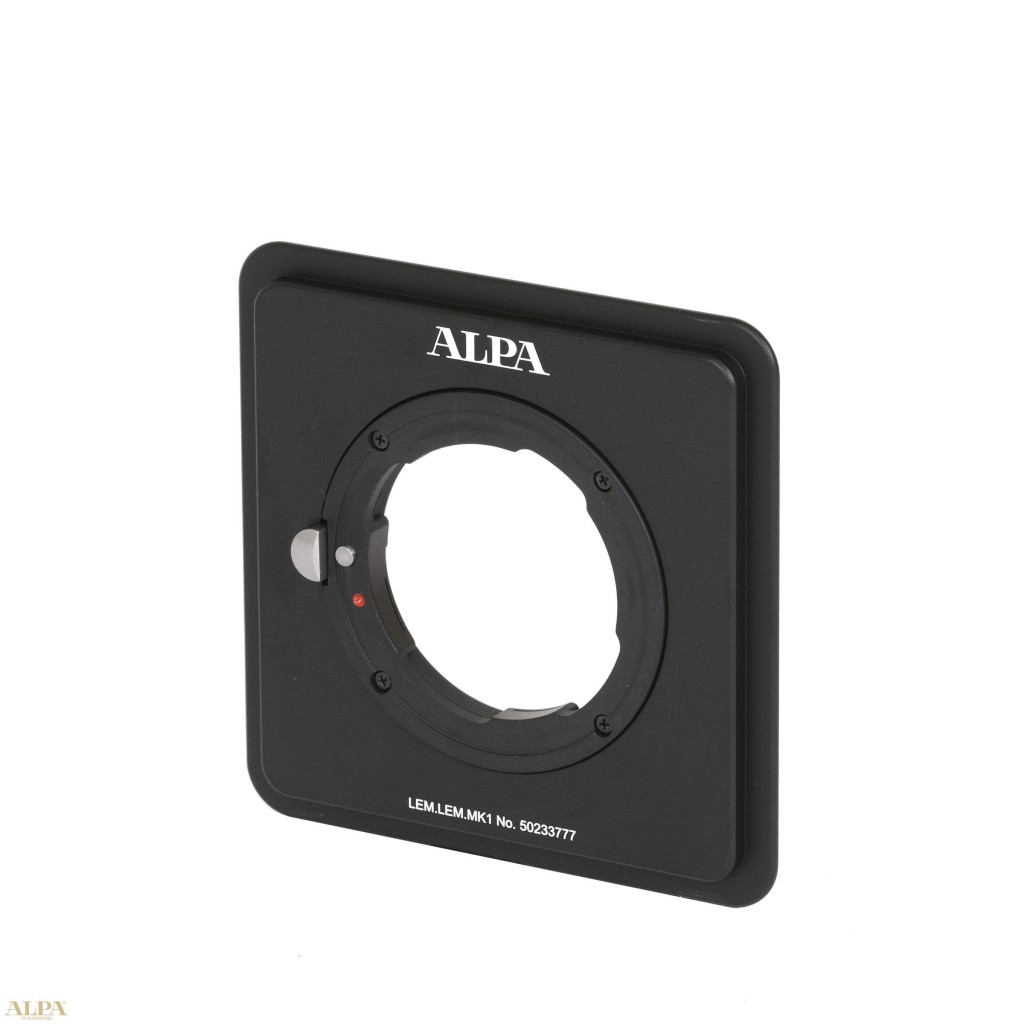뉴스
본문
"LEICA M" 렌즈 모듈 출시
페이지 정보
작성자케이피유어스 작성일 19-04-02 13:11 조회 4,823회05.2018 - Leica-M 렌즈 모듈을 사용하여 ALPA는 ALPA 카메라에서 M 바요넷으로 렌즈를 사용할 수있는 가능성을 창출했습니다.
새로운 렌즈 모듈을 통해 ALPA는 ALPA 12 카메라에서 "캐릭터가 있는 렌즈"를 사용할 수있는 가능성을 제공합니다.
M 렌즈는 단지 27.80 밀리미터의 지지 치수로 설계 되었기 때문에 ALPA 12 FPS 셔터 장치는 ALPA 35mm 렌즈 모듈에 이미 적용되는이 렌즈 모듈과 함께 사용할 수 없습니다.
즉, 이 렌즈는 전자 셔터 기능이 있는 디지털 백에서만 사용할 수 있습니다.
현재 이 디지털백은 Phase One의 IQ3 100MP 백이며 Hasselblad H6D 100c의 특정 제한 사항 (가장 빠른 셔터 속도 1/8 초)이 있습니다.
기본적으로 M 바이오넷이있는 렌즈를 사용할 때, 이 렌즈의 대부분이 35mm 형식 24 x 36mm를 비추는 이미지 써클에 대해 계산되어야한다는 것을 고려해야합니다.
Phase One의 IQ3 100MP 백의 형식이 40 x 53mm이기 때문에, 대부분의 M 바요넷 렌즈는 전체 센서 형식을 비추지 않습니다. 원칙적으로, 사용 가능한 이미지 써클은 선택된 초점 거리가 길수록 증가합니다. 그러나, 좁은 바요넷(bayonet)으로 인해 기계적 비네팅에 의해 상쇄 될 수 있기 때문에 각 렌즈의 적합성을 미리 확인해야합니다.
Leica-M ALPA 렌즈 모듈은 주로 ALPA 카메라로 M 바요넷이있는 기존 렌즈를 사용하려는 실험 지향적인 사용자를 대상으로 합니다.
Carl Zeiss의 ZM 렌즈와 Ernst Leitz Wetzlar, Ernst Leitz Canada 및 Leica Camera in Solms와 같은 많은 렌즈가 있었지만 여전히 많은 수의 렌즈가 있습니다. 이러한 맥락에서 새로 출시 된 Thambar-M 2.2 / 90은 특별한 관심을받을 수 있었습니다. 어떤 M 렌즈를 디지털 카메라와 함께 사용할 수 있습니까? 특히 Phase One IQ3 100MP 백에서는 각 사용자가 직접 결정해야합니다.
Leica와 Zeiss 브랜드의 M 렌즈 외에도 수많은 M 호환 모델이 있었고, 여전히 있습니다. 미놀타는 미놀타 CL과 CLE 용 M 바요넷으로 Rokkor 렌즈를 제작했습니다.
Konica는 또한 Konica Hexar RF 카메라 용으로 제작 된 Konica KM 바요넷으로 렌즈를 소규모로 공급했습니다. 널리 사용되는보기와 달리 Konica 렌즈는 27.80 밀리미터의 지지 치수로 설계되었습니다. 가능한 편차는 생산과 관련이 있습니다.
독일 제조업체 인 Rollei Fototechnic은 Rollei 35 RF 카메라 용 Sonnar 2.8 / 40 mm HFT 및 Planar 2.8 / 80 mm HFT와 M 렌즈 연결 두 개의 렌즈를 공급했습니다. 40mm 렌즈는 Rollei 35S 및 80mm 렌즈와 Rollei의 중간 포맷 카메라에 연결됩니다.
이미 디지털 사용을 위해 계산 된 M 바요넷을 포함한 현재 렌즈에는 Voigtländer Hyper Wide Heliar VM 5.6 / 10mm, Ultra Wide Heliar III VM 5.6 / 12mm 및 Super Wide Heliar III VM 4.5 / 15mm가 포함됩니다.
또한 Voigtländer VM 렌즈 범위에는 몇 가지 고농축 Nokton 모델이 포함되어 있습니다. Voigtländer는 풀 프레임 디지털 카메라에 적합한 12-25 밀리미터의 VM 바요넷으로 전체 렌즈 범위를 설명합니다. 또한 M 마운트가 장착 된 추가 렌즈는 주로 일본에서 소규모 시리즈로 제작되었으며 그 중 일부는 다양한 브랜드 이름으로 제공됩니다.
그러나 사용 가능한 각 이미지 서클 내에서 모든 형식을 자를 수 있으며 사용자는 디자인 옵션에서 더 자유롭습니다.
단, Leica 3 : 2 종횡비는 제한되지 않습니다. 따라서 Leica M 용 ALPA 렌즈 모듈은 관심있는 사진 작가에게 완전히 새로운 디자인 가능성을 열어줍니다.
05.2018 - With the Leica-M lens module, ALPA has created the possibility of using lenses with M bayonet on ALPA cameras. With the new lens module ALPA offers the possibility to use additional "lenses with character" on the ALPA 12 cameras. Since the M lenses are designed for a support dimension of only 27.80 millimeters, the ALPA 12 FPS shutter unit cannot be used with this lens module, a limitation that already applies to the ALPA 35 mm lens module. This means that these lenses can only be used with a digital back that has an electronic shutter function. Currently this is the IQ3 100MP back of Phase One and with certain limitations (fastest shutter speed 1/8s) also the Hasselblad H6D 100c.
Basically, when using lenses with M bayonet, it must be taken into account that the majority of these lenses were calculated for an image circle that illuminates the 35mm format 24 x 36 millimeters. Because the format of the IQ3 100MP back of Phase One is 40 x 53 millimeters, the vast majority of M bayonet lenses do not illuminate the entire sensor format. In principle, the usable image circle increases the longer the selected focal length is. However, since this may be offset by mechanical vignetting due to the narrow bayonet, the suitability of each lens must be checked beforehand.
The Leica-M ALPA lens module is primarily aimed at experimentally oriented users who want to use existing lenses with an M bayonet with their ALPA camera. And there was and still are a large number of lenses, many of which date from the analogue era, such as the ZM lenses from Carl Zeiss and many lenses from Ernst Leitz Wetzlar, Ernst Leitz Canada and Leica Camera in Solms. In this context, the newly launched Thambar-M 2.2/90 could receive special attention. Which M lenses can be used with a digital camera, especially with the Phase One IQ3 100MP back, each user has to decide for himself.
In addition to the M lenses of the Leica and Zeiss brands, there were and still are numerous other M-compatible models. Minolta also produced Rokkor lenses with M bayonet for the Minolta CL and CLE. Konica also supplied lenses on a small scale with the Konica KM bayonet, which were produced for the Konica Hexar RF camera. In contrast to the widely used view, the Konica lenses are also designed for a support dimension of 27.80 millimeters. Possible deviations are rather production-related. The German manufacturer Rollei Fototechnic supplied the two lenses Sonnar 2.8/40 mm HFT and Planar 2.8/80 mm HFT with M connection for the Rollei 35 RF camera. The 40 mm lens is connected to the Rollei 35 S and the 80 mm lens to the medium format cameras from Rollei. Both lenses were mounted with lens sets manufactured under license from Carl Zeiss in Germany in frames from Japan.
The current lenses with M bayonet, which have already been calculated for digital use, include the Voigtländer Hyper Wide Heliar VM 5.6/10 mm, Ultra Wide Heliar III VM 5.6/12 mm and Super Wide Heliar III VM 4.5/15 mm. In addition, the Voigtländer VM lens range also includes several high-intensity Nokton models. Voigtländer describes its entire current lens range with VM bayonet from 12 to 75 millimeters as suitable for full-frame digital cameras. In addition, further lenses with M-mount have been and are mainly manufactured in Japan in small series, some of which are offered under various brand names.
Within each usable image circle, however, any format can be cropped and the user is much freer in the design choice and not just limited to the classic Leica 3:2 aspect ratio. The ALPA lens module for Leica M therefore opens up completely new design possibilities for the interested photographer.
댓글목록
등록된 댓글이 없습니다.
 kpyours
kpyours




